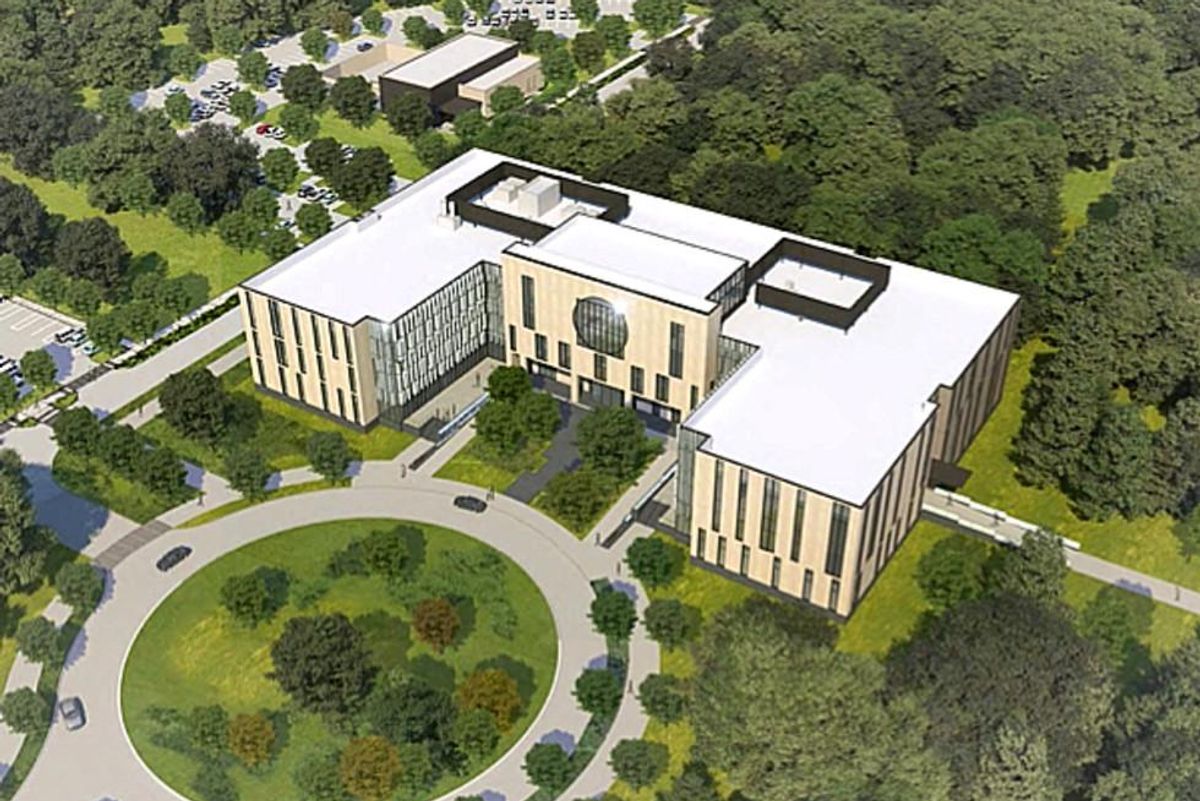Q&A
Following $50M gift,Tilman Fertitta reveals goals for eponymous medical school at University of Houston
As Houston’s most high-profile billionaire and owner of the posh 5-star Post Oak Hotel and Houston Rockets, Tilman J. Fertitta has become synonymous with over-the-top opulence and big-time entertainment.
But the CEO of the massive Feritta Entertainment empire’s latest move has nothing to do with penthouses or point guards, but rather a legacy, game-changing appropriation meant to aid his home state’s health.
The longtime UH board member and former chairman and his family have just pledged $50 million to the University of Houston College of Medicine. In turn, the new medical school has been christened the Tilman J. Fertitta Family College of Medicine.

This landmark gift aims to address the state’s critical primary care physician shortage, (especially in low-income and underserved communities), as well as attract innovation-focused scholars, UH notes.
Additionally, the grant is meant to further clinical and translational research, with an emphasis on population health, behavioral health, community engagement, and the social determinants of health, according to a press release.
Here is how the Fertitta family gift will be distributed:
- $10 million funds five endowed chairs for faculty hires who are considered national stars in their fields with a focus on health care innovation. This portion of the gift will be matched one-to-one as part of the University’s “$100 Million Challenge” for chairs and professorships, doubling the endowed principal to $20 million.
- $10 million establishes an endowed scholarship fund to support endowed graduate research stipends/fellowships for medical students.
- $10 million will cover start-up costs for the Fertitta Family College of Medicine to enhance research activities including facilities, equipment, program costs and graduate research stipends/fellowships.
- $20 million will create the Fertitta Dean’s Endowed Fund to support research-enhancing activities.
No stranger to writing big checks, Fertitta donated $20 million to UH Athletics — the largest individual donation ever — in 2016 to transform UH’s basketball arena into the now high-tech Fertitta Center.
CultureMap caught up with the CEO (who just sold his Golden Nugget gaming for $1.6 billion), best-selling author, and Billion Dollar Buyer to discuss his landmark gift.
CultureMap: Congratulations on this legacy grant, which has been a long time coming. What does this gift mean to you, now that it’s finally official?
Tilman Fertitta: This was a vision of our chancellors and, you know, I’m on my third, six-year term and not been the chairman for eight years — and we started working on this, seven, eight years ago.
To be able to be in the beginning and the nucleus, and the idea, and what we wanted, and to get the approval from Austin—to watch it come to fruition, how often does somebody get to do a naming gift at the same time they had a lot to do with the creation of the school? So, it was very special in my heart.
CM: Many know you as the CEO of a hospitality empire, author, and even TV personality. But not many know of your commitment to healthcare.
TF: I think there’s one thing in this world that we definitely should always be treated equally on, and that's that’s equal health care for all. This medical school will serve the whole community.
We’re trying to recruit students who want to be primary physicians who will take care of the community that we live in. It’s just something that was very important to me in my whole family.
CM: Academia, scholarship, and research aside, this could essentially be looked at as seed capital for a fledgling operation. Is that a fair assessment?
TF: I know where you’re going with this and yes, it’s no different than business.
I have the vision to know that being in nearly the third largest city in America and a top 100 university in the United States — as University of Houston is according to U.S. News & World Report — that I know what this is going to be in 50 years. It’s no different than looking at another business that you start and you can have the vision to see how successful it'll be in the years to come.
Being on the ground floor of the University of Houston Medical School and being a part of it from its inception, and to help the seed money that will attract other money, I know that in the years to come what a special nationwide medical school this is going to be — because it’s in one of the great cities of America.
So, to be a part of it today and still be a part of it when I’m not here 50 years from now, maybe even sooner than that [laughs], you know, it’s going to be something very special to always be attached to.
CM: Other Houston medical schools here have distinctions in pivotal research or groundbreaking procedures. Is there a specific direction you’d like UH Med to take, going forward?
TF: Honestly, you know, what I’ve been saying? There’s a significant shortage of primary care physicians, not only in the country, but in the state of Texas. We ranked number 47th in the nation.
What we need in the state of Texas, as well in Houston and everywhere, is primary care physicians to take care of your everyday people—and to see them to know if you need a specialist.
I hope that this medical school looks back and we see that they’re graduating more primary care physicians than any other university in the United States and that's our goal. We’re going to be a med school of the community.
CM: You have zero problem with issuing directives, Tilman. What’s your message to the first graduating class, the one that will initially benefit from this $50 million gold mine?
TF: Go out and take care of the people.
------
This article originally ran on CultureMap.
